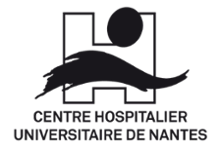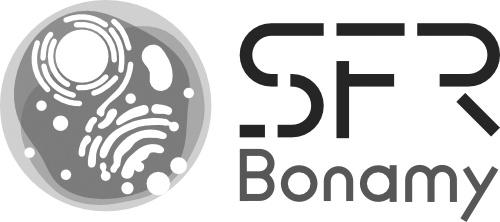History of the Nantes health research cluster
Towards a Nantes cluster of excellence in health of the future
2020: Following the withdrawal of the Ecole Centrale de Nantes from the NExT project in December 2019, the 4 founders commit together to build a new project temporarily named NExT2. This project is currently under construction.
2017: The NExT project (Nantes Excellence Trajectory) was selected by an international jury and was awarded the I-SITE (Initiatives Science, Innovation, Territoires, Economie) label by the Programme Investissement d'Avenir (PIA 2).
Led by the University of Nantes, the Ecole Centrale de Nantes, the Nantes University Hospital and Inserm, the NExT project aims to make Nantes an internationally renowned university site, recognized for its expertise in research, training and innovation on two major and interdisciplinary societal issues:
- the health of the future: innovative biotherapies, nuclear medicine and cancer, precision medicine...
- the industry of the future: advanced production technologies, ocean engineering...
The Nantes site has won several highly competitive calls for projects in clinical and translational research :
- the SIRIC ILIAD project « Imaging and Longitudinal Investigations to Ameliorate Decision-making in multiple myeloma and breast cancer » in the fields of nuclear medicine and cancer
- the RHU Success project "Synergy for a Universal Skin Substitute"
- the HAP² project "Host-targeted Approaches for the Prevention and the treatment of Hospital-Acquired Pneumonia", European project H2020 in coordination in Nantes
From the IFR26 to the SFR Santé
2012: the Structure Fédérative de Recherche-Santé (SFR-Santé) François BONAMY is created from the Institut Fédératif de Recherche (IFR26) in Nantes. It is located in several buildings on the campus of the University of Nantes health complex (Faculties of Medicine, Pharmacy and Dentistry), part of the Nantes University Hospital and research units.
2010: the Nantes CHU is a candidate for the creation of a University Hospital Institute for the sciences of transplantation (IHU) and the Centre de Lutte contre le Cancer (CLCC) is a candidate to be labeled as an integrated cancer research site (SIRIC).
Between 2005 and 2010: IFR26 is growing with new teams and new fields of research, such as protein analysis, study of the enteric nervous system and nutritional imprint, neurosciences, infectious diseases and biostatistics.
During the 2000s: implementation of several research support structures and creation of several research institutes which, following the example of the ITERT, ensure a triple mission: teaching, research and care.
2001: the creation of the Multi-thematic Clinical Investigation Center (CIC) is a testimony to the collective work organized between researchers and doctors from the care services of the CHU Hôtel Dieu and the Nord Laennec Hospital.
The structuring of the health research cluster
1998: the teams of Jean Léger and Pierre Pacaud left the South of France and joined the Laboratory of Cellular and Molecular Physiopathology and Pharmacology which became CJF Inserm in 1996 and then a joint research unit in 2000 (UMR 533).1997: the IFRBM Immunointervention is enriched by research dedicated to therapeutic vectors with the arrival of Philippe Moullier's team (UMR 649) and, two years later, the physiopathology and digestive pharmacology field led by professors Christian Laboisse, Michel Krempf and Jean-Paul Galmiche (UMR 539).
1994: Professor Hervé le Marec's experimental cardiology laboratory at the CHU Nord Laennec and Professor Denis Escande's team relocated from Paris merge to form the Laboratory of Cellular and Molecular Physiopathology and Pharmacology.
Following the creation of unit 437 by Jean-Paul Soulillou, Marc Bonneville takes over the management of unit 211, refocusing its activities on immuno-cancerology. The CJF9011 young training contract headed by Khaled Meflah becomes Inserm unit 419 "Colonic cancer biology and experimental therapeutics".
1995: following a call for applications from Inserm, the Institut Fédératif de Recherche biomédicale (IFRBM, aimed to become IFR26) was created. It brings together 3 Inserm units, two associated teams, a young team and a recommended team from the University of Nantes and 3 hospital laboratories, including Jean-Paul Moisan's, who introduced molecular biology to the CHU in 1988.
1991: this year is characterised by the creation of the Institute for Transplantation and Research in Transplantation (ITERT) by Jean-Paul Soulillou. This innovative research structure combines two clinical departments of the CHU and a basic research unit.
1990: Guy Daculsi creates a young Inserm training contract (CJF9305) continuing the research on calcified tissues initiated by Bertrand Kerebel but introducing research on biomaterials.
1987: Jean-Paul Soulillou takes over as head of the Inserm U 211 unit and focuses the unit's research on immunointervention.
The emerging biology/health research cluster
1979: Professor Bertrand Kerebel founded in 1979, within the Faculty of Dental Surgery, an associated research training course (Inserm - FRA 35) specialised in the study of calcified tissues and recognised as an Inserm unit in 1981 (U 225).
1975: Professor Jean-Paul Soulillou creates the clinical immunology laboratory within the blood transfusion centre and becomes responsible at the CHU for the kidney transplant programme.
Early 1970s: Professors Le Mével and the Guihard brothers from the University of Nantes founded an Inserm research training course (FRA 13) within the anti-cancer centre, which will become in 1981, the first Inserm unit in Nantes (U 211) entitled "cellular interactions against cancer". Led by Bernard Le Mével until 1987, this unit brought together, among others, professors and doctors Jean-Paul Soulillou, Jean-François Chatal and Jacques Aubry.
1968: researchers Nicole and Georges Le Douarin found a first CNRS associated team in the Faculty of Sciences.
Who was François Bonamy?

A Nantes doctor and botanist, François Bonamy (1710-1786) was regent of the Nantes Faculty of Medicine, public prosecutor and then rector of the University of Nantes.
He also directed the Jardin des Plantes de Nantes and founded the Société d'Agriculture de Bretagne.



